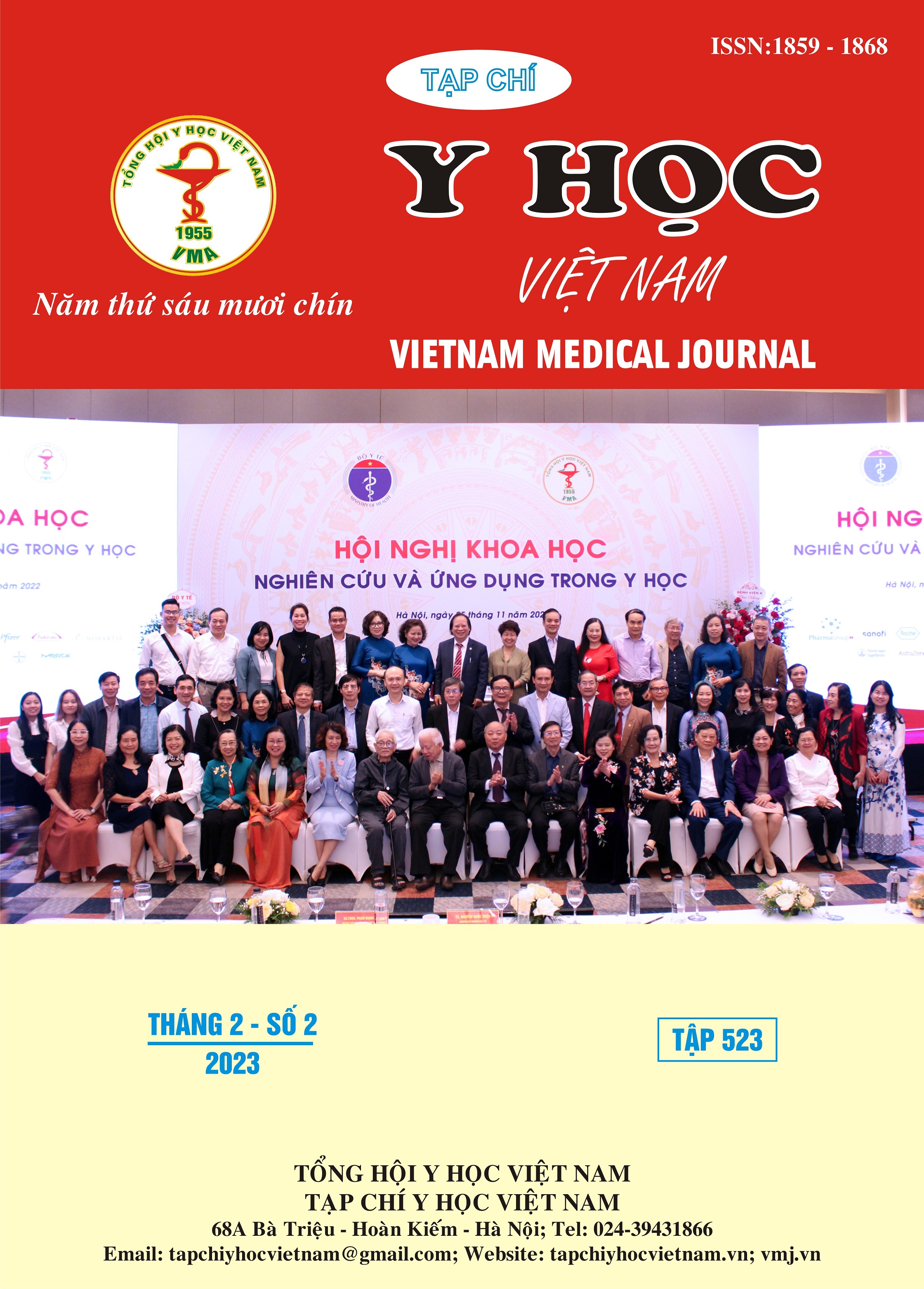THE SUCCESSFUL TREATMENT OF ≤8 WEEKS WITH CESAREAN SECTION SCARS BY ASPIRATION UNDER ULTRASOUND AT HUNG VUONG HOSPITAL
Main Article Content
Abstract
Objectives: Determine the success rate of the method of abortion under ultrasound for fetuses less than or equal to 8 weeks of cesarean section scarring. Methods: Descriptive study of a series of 100 cases with confirmed diagnosis of 8 weeks' gestation with cesarean delivery and initial treatment by ultrasound suction method at the hospital. Oncology Assistant at Hung Vuong Hospital from June 1, 2020 to June 1, 2021. Results: The mean age of these subjects was 36.2 ± 4.9 years old. The most common symptom was vaginal bleeding with or without abdominal pain, accounting for 23%. The mean gestational age was 5.9±0.9 weeks. The majority of fetuses with SMLT were without fetal heart rate, accounting for 79%. The average size of the fetal mass before surgical intervention was 21.3±9.6 mm. The average thickness of the mechanism at SMLT is 3.3 ± 1.0 mm. COS2- makes up the majority with 75%, COS2- makes up the minority with 25%. The mean β-hCG concentration before intervention with 48331.2 ± 37350 mUI/ml. The success rate of the treatment of ≤8 weeks of implantation by the sub-SA suction method is 92%, and the failure rate is 8%. Conclusion: Aspiration below SA in the treatment of fetuses ≤8 weeks of implantation, with uterine muscle thickness greater than 2mm can be considered as a safe and effective treatment method.
Article Details
Keywords
Caesarean section, abortion, ultrasound
References
2. Rotas, M.A., S. Haberman, and M. Levgur, Cesarean scar ectopic pregnancies: etiology, diagnosis, and management. Obstetrics & Gynecology, 2006. 107(6): p. 1373-1381.
3. Jurkovic, D., Knez, et al., Surgical treatment of Cesarean scar ectopic pregnancy: efficacy and safety of ultrasound‐guided suction curettage. Ultrasound in Obstetrics & Gynecology, 2016. 47(4): p. 511-517.
4. Timor-Tritsch, I.E., Monteagudo, et al., The diagnosis, treatment, and follow-up of cesarean scar pregnancy. American journal of obstetrics and gynecology, 2012. 207(1): p. 44. e1-44. e13.
5. Timor-Tritsch, I.E. and A. Monteagudo, Unforeseen consequences of the increasing rate of cesarean deliveries: early placenta accreta and cesarean scar pregnancy. A review. American journal of obstetrics and gynecology, 2012. 207(1): p. 14-29.
6. Polat, I., Ekiz,, et al., Suction curettage as first line treatment in cases with cesarean scar pregnancy: feasibility and effectiveness in early pregnancy. The Journal of Maternal-Fetal & Neonatal Medicine, 2016. 29(7): p. 1066-1071.
7. Wang, S., Y. Li, and X. Ma, Lower uterine segment thickness in assessing whether cesarean scar pregnancy patients could be treated with suction curettage. The Journal of Maternal-Fetal & Neonatal Medicine, 2020. 33(19): p. 3332-3337.
8. Tuan Minh Vo, T.V., Long Nguyen, Management of cesarean scar pregnancy among Vietnamese women. Gynecology and minimally invasive therapy, 2019. 8(1): p. 12.


